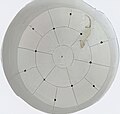| Animal testing |
|---|
 |
| Main articles |
| Testing on |
| Issues |
| Cases |
| Companies |
| Groups/campaigns |
|
| Writers/activists |
| Categories |
Animal models of depression are research tools used to investigate depression and action of antidepressants. They are used as a simulation to investigate the symptomatology and pathophysiology of depressive illness and to screen novel antidepressants. These models provide insights into molecular, genetic, and epigenetic factors associated with depression. Criteria for valid animal models include face, construct, and predictive validity. Endophenotypes, such as anhedonia, behavioral despair, changes in appetite, neuroanatomical alterations, neuroendocrine disturbances, alterations in sleep architecture, and anxiety-related behaviors, are evaluated in these models. Antidepressant screening tests are employed to assess the effects of genetic, pharmacological, or environmental manipulations. Stress models including learned helplessness, chronic mild stress, and social defeat stress simulate the impact of stressors on depression. Early life stress models, psychostimulant withdrawal models, olfactory bulbectomy, and genetically engineered mice contribute to a comprehensive understanding of depression's etiology and potential therapeutic interventions.




